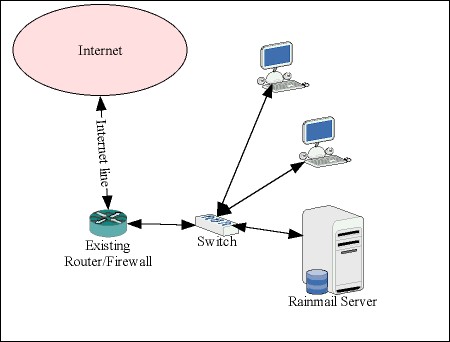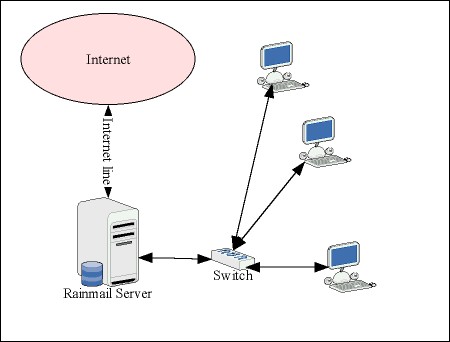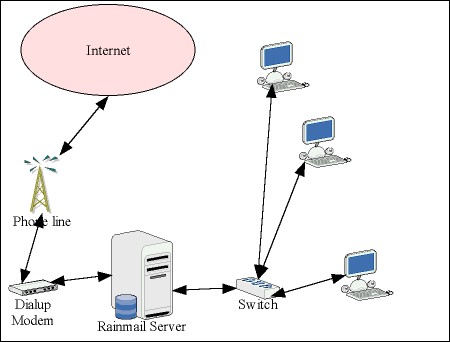In terms of Internet connectivity, Rainmail Server is deployed on a Organization LAN (Local Area Network) in the following ways:
- Node in the LAN In this scenario, Rainmail Server is deployed like any other node in the LAN. In this case, for Internet access, Rainmail Server goes through a Gateway. The gateway is usually a router or a Firewall. Please note that in this case Rainmail Firewall, if purchased, cannot be deployed. Rainmail Firewall can only be deployed in gateway mode. This architecture is represented diagrammatically as follows

- Internet Gateway In this scenario, Rainmail Server sits on the perimeter between Internet and Local network. In this mode, Rainmail Firewall needs to be purchased/activated for security. Rainmail Firewall protects the local Network from attacks originating in the Internet. In this scenario, Rainmail Server should have two Network cards. One card will be connected to the Internet line and another to the local LAN switch. This architecture is diagrammatically represented as follows:

- Internet Gateway with multiple ISP lines This scenarios is similar to the above architecture. However, in this case, client has multiple ISP lines. Rainmail Server sits in the perimeter between the Internet lines and local network. In this case, Rainmail Firewall as well as Rainmail Bandwidth Aggregator should be activated. Rainmail Firewall will protect the local Network from any external attacks. Rainmail Bandwidth Aggregator will load balance multiple Internet links. In this case, if the number of Internet lines is N, Rainmail Server will need to have N+1 Network cards. This architecture is diagrammatically represented as follows:

- Internet Gateway (Legacy Mode) While this deployment is no longer very popular, it may still be required in cases where only a Dial up access to Internet is available. In this mode,
- Rainmail Server is connected to a Modem (using USB or Serial port). The modem, in turn is connected to a telephone line
- Rainmail Server is connected to local Network switch
- Rainmail Server connects to Internet on demand, by dialing the ISP phone number, and shares the Internet connection with all computers in the network.
- This is diagrammatically represented as below:




